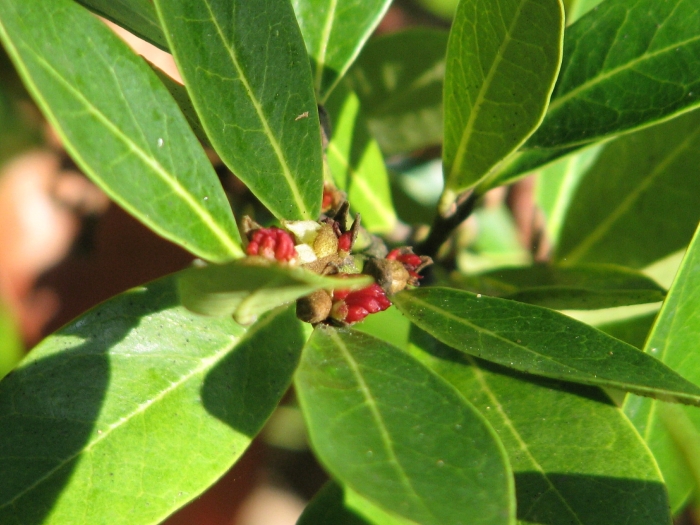Blue Leaf Isu Tree
(Distylium myricoides)
Blue Leaf Isu Tree (Distylium myricoides)
/
/

peganum
CC BY-SA 2.0
Image By:
peganum
Recorded By:
Copyright:
CC BY-SA 2.0
Copyright Notice:
Photo by: peganum | License Type: CC BY-SA 2.0 | License URL: https://creativecommons.org/licenses/by-sa/2.0/ | Uploader: peganum | Publisher: Flickr |








Estimated Native Range
Summary
Distylium myricoides, commonly known as Blue Leaf Isu Tree, is an evergreen shrub native to the forest understories and stream banks in South Central and Southeastern China. It typically grows to a height of 1-2 feet (0.3-0.6 meters) and a width of 2-4 feet (0.6-1.2 meters), with a dense, mounding habit that makes it suitable for use as a ground cover or low hedge. The plant features small, leathery, blue-green leaves that provide year-round interest. From April to June, it produces inconspicuous reddish flowers, followed by fruits from June to August. The genus name ’Distylium’ is derived from Greek and means ’two styles,’ referring to the plant’s prominent, separate styles.
Blue Leaf Isu Tree is valued for its low maintenance requirements, tolerance of a range of soil conditions, and resistance to pests and diseases, making it a reliable choice for gardeners. It is often used in urban landscapes, foundation plantings, and as a border shrub. This shrub thrives in full sun to part shade and prefers medium amounts of water with well-drained soil. While it is not known for aggressive roots or significant disease problems, it can suffer from root rot if planted in poorly drained soils.CC BY-SA 4.0
Blue Leaf Isu Tree is valued for its low maintenance requirements, tolerance of a range of soil conditions, and resistance to pests and diseases, making it a reliable choice for gardeners. It is often used in urban landscapes, foundation plantings, and as a border shrub. This shrub thrives in full sun to part shade and prefers medium amounts of water with well-drained soil. While it is not known for aggressive roots or significant disease problems, it can suffer from root rot if planted in poorly drained soils.CC BY-SA 4.0
Plant Description
- Plant Type: Shrub
- Height: 1-2 feet
- Width: 2-4 feet
- Growth Rate: Moderate
- Flower Color: Non-Flowering
- Flowering Season: Winter
- Leaf Retention: Evergreen
Growth Requirements
- Sun: Full Sun, Part Shade
- Water: Medium
- Drainage: Medium, Fast
Common Uses
Border Plant, Groundcover, Hedges, Low Maintenance, Potted Plant
Natural Habitat
Forest understories and stream banks
Other Names
Common Names: Evergreen Witch Hazel, Isu Tree, Mosquito Myrtle
Scientific Names: , Distylium myricoides, Distylium myricoides var. nitidum, Distylium myricoides var. macrocarpum,
GBIF Accepted Name: Distylium myricoides Hemsl.